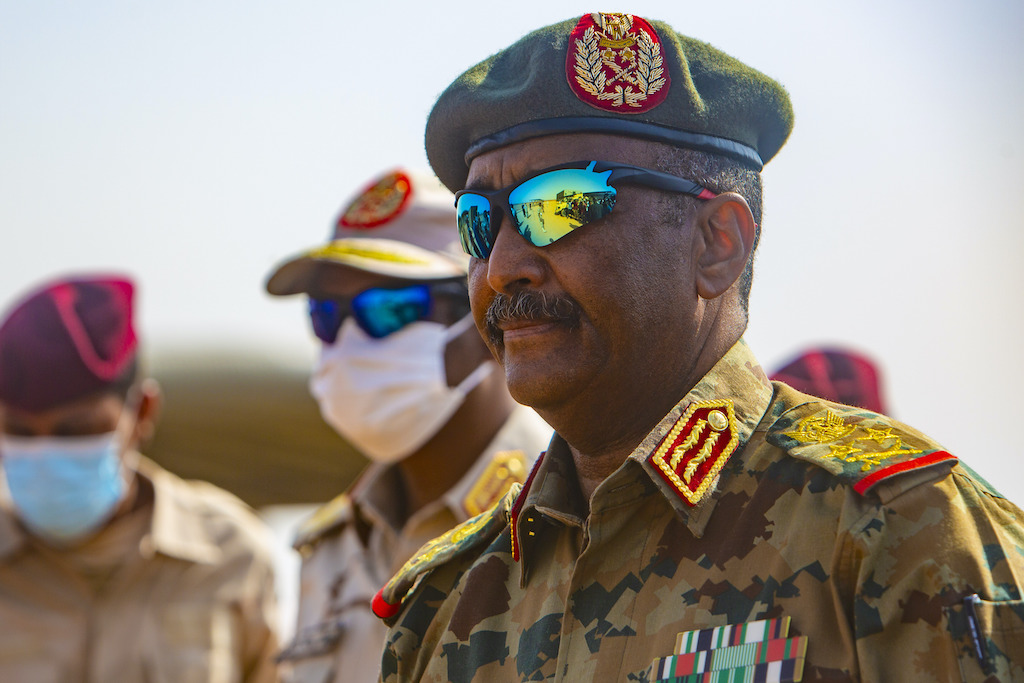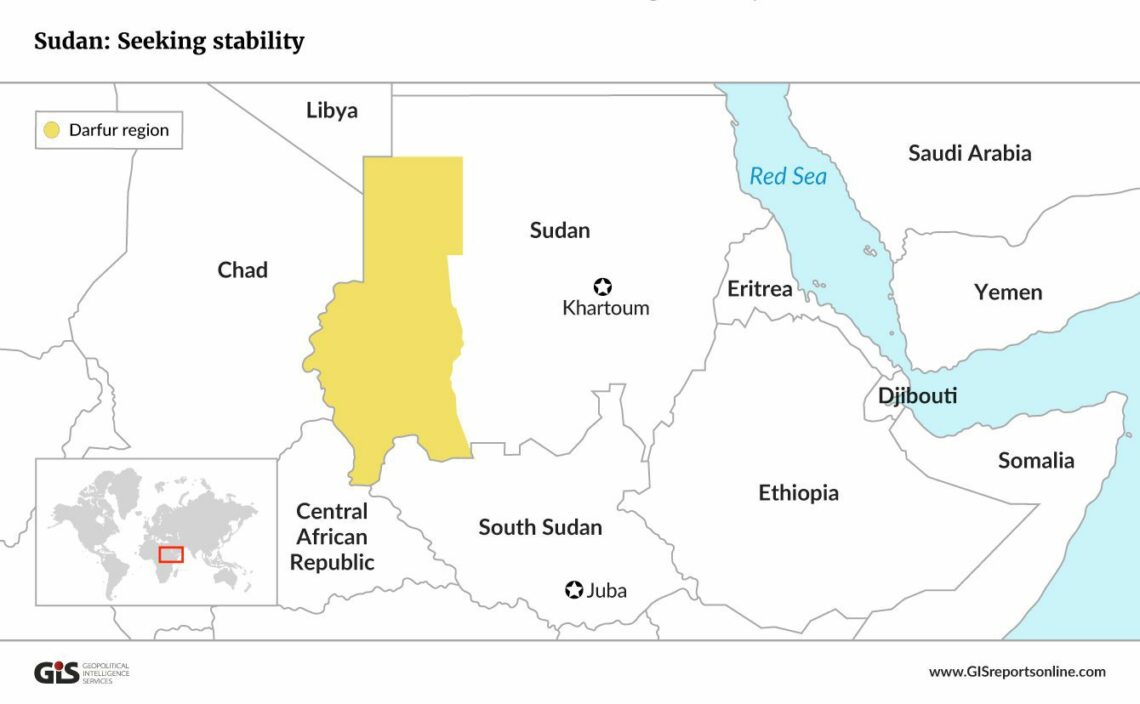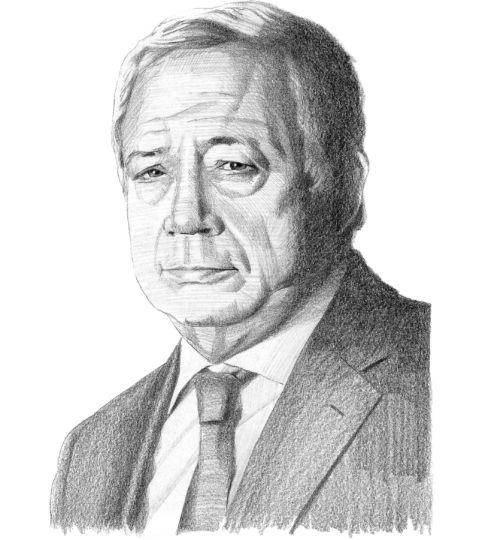Sudan: Youth fight against military rule
The current chapter of instability in Sudan involves a tug-of-war between a typical military regime and a new generation of ingenious social and political activists who see no future for themselves in the existing system.

In a nutshell
- The Sudanese opposition demands a civilian-led government
- Activists use ingenious tactics to pressure the ruling generals
- The regime is violent and entrenched in the provinces
Co-authored by Dr. Carlota Ahrens Teixeira.
In late 2018, a popular revolution started in Sudan; in April of 2019, it removed the country’s entrenched military regime. Soon, those hoping for a fundamental political shift saw army officers again firmly in power and responding with brutal force to the opposition. By the summer of 2021, the junta consented under pressure to share power with a civilian coalition. However, the tug-of-war continues.
Tradition of unrest
Since its independence from Anglo-Egyptian rule in 1956, Sudan, located in northeastern Africa, has been a place of continuous domestic confrontations due to ethnic and religious differences. The main fights have been taking place between the Arab Muslim north and the African south, predominantly Christian and home to animist groups, which historically resent the dominance of the northern Muslims.
In 1958, a military coup led by General Ibrahim Abboud deposed the civil government of Prime Minister Abdallah Khalil. That inaugurated what proved to be a regular cycle in Sudan’s political history: successive coups bringing about new governments, alternating between periods of military or one-party dictatorship and more seemingly democratic regimes – at least, constitutional civilian governments. The list of coups is as long as the list of former dictators.
The attempts to create a federal system ran into the sand, north and south remained in permanent conflict.
On June 30, 1989, Brigadier General Omar al-Bashir came to power through another coup. After that, he would be reelected, ruling Sudan as a field marshal through a declared and intermittent state of emergency for nearly 30 years.
Meanwhile, as the attempts to create a federal system ran into the sand, north and south remained in permanent conflict.
Al-Bashir’s dictatorship
Born in the state of Northern Sudan, General al-Bashir fits the traditional mold of a North African strongman. Once in power, as chairman of the newly created revolutionary council, he banned political parties, associations, cracked down on independent media, ordered purges and executions in the military and institutionalized the Islamic law (sharia).
In 1993, he proclaimed himself president, dismantled the revolutionary council and, supported by the political party of his making, amassed a centralized, absolute power in the country.
Facts & figures

In 2003, on top of the north-south war, a new rebellion emerged at the hands of the Darfur Liberation Front. Fighting against militias and rebel groups such as the Sudan Liberation Army and the Justice and Equality Movement, the government conducted the war with extreme brutality, mass killings, and other human rights abuses. The wounds of Darfur still reverberate today in the relationship between different groups that came into power in 2019, following Gen. al-Bashir’s fall. These groups are principal players in the current political predicament.
The October coup
By the end of 2018, opposition to the al-Bashir regime gained momentum, with massive peaceful protests on the streets demanding the strongman’s removal. It was the beginning of the “Sudanese revolution” aimed at a fundamental political shift in the country.
Large-scale civil disobedience followed the protests, and a military coup toppled the regime in April 2019. A transitional Sovereignty Council of Sudan was formed, ostensibly to guide a Sudanese changeover to democracy. At its head was General Abdel Fattah al-Burhan (the army’s commander in chief), and General Mohamed Hamdan Dagalo, also know as “Hemetti,” became his deputy.
Gen. Dagalo is the head of the Rapid Support Forces (RSF). This much-feared paramilitary group grew out of the al-Bashir-backed militias that fought the rebel groups in Darfur and became notorious for the atrocities committed during this conflict.
In time, under immense pressure from protests on the street, the regime had to take a step back. People were enraged by the June 2019 massacre of protesters in Khartoum and the fact that the generals were fully in charge again, with no ruling counterpart. The military leadership negotiated a power-sharing agreement with the Forces for Freedom and Change (FFC), a loose coalition of civilian and former Darfur rebel groups. On August 20, 2019, power was transferred to a joint civilian-military body – the 11-member Sovereignty Council of Sudan. A civilian prime minister, Abdalla Hamdok, formed a new government.
The populace reacted with fury. Uprisings followed; the military responded by firing on the protesters.
That was the start of a 39-month transitional period schedule that was supposed to end with Sudan’s return to democratic rule: legislative elections in 2024 and the creation of a democratically elected government. The transition crumbled on October 25, 2021, when General al-Burhan and other senior officers (Gen. Dagalo among them) ousted the civilian government by detaining Prime Minister Hamdok and several members of his cabinet. The populace reacted with fury. Uprisings followed; the military responded by firing on the protesters – to deadly effect.
International response
The United Nations, the African Union (AU), the Arab League and several international partners condemned the coup. The AU suspended Sudan’s membership. The United States, the United Kingdom, the United Arab Emirates and Saudi Arabia jointly called for an end to the military intervention, the release of the detainees and the restoration of the previous order. The World Bank, Washington and Berlin cut off financial and economic assistance to the country. Under such pressure, General al-Burhan publicly proclaimed the military’s commitment to the transition process.
He ordered the prime minister and his cabinet members to be released and announced his intent to appoint “a technocrat” as the new head of the government. However, the subsequent developments suggest that the military will not cede easily. On November 11, 2021, General al-Burhan appointed a new governing council, which he would lead, with Gen. “Hemetti” remaining his deputy.
Behind the coup
The relationship between civilians and the military has always been uneasy. The military never wanted the power-sharing agreement in the first place. They acceded to it only when it became clear that the protests would not relent. The military leaders also worried about the post-transition order, which foresaw no apparent place for them. In particular, the generals feared for their control over key sectors of the economy and network of companies, worth billions of dollars, that they came to manage during the al-Bashir years.
Another worry was the possibility of being held accountable for the abuses committed in that period and during the transition. Before the July 2022 deadline for handing over power to civilians, the army decided to make its move, taking advantage of the divisions within the FFC and the inevitable popular discontent with Prime Minister Hamdok’s management of Sudan’s sclerotic economy. The regional powers, reticent as they have been about seeing a successful civilian transition in Khartoum, are believed to have encouraged the military’s move.
The street element
Street protests have been pivotal to the Sudanese revolution since it started back in 2018. Following Marshal al-Bashir’s ousting, the uprisings did not subside until a civilian-led government emerged. And now, thousands are converging once more against a military takeover that threatens to destroy their aspirations for a new Sudan.
The protesters demand actual governance change and a say in their future.
Young people play a leading role. The young generation (one of the most numerous in Africa) has seen little benefit under the al-Bashir regime and expects nothing better from the al-Burhan clique. The protesters demand actual governance change and a say in their future.
The Neighborhood Resistance Committees (NRCs) constitute another critical aspect of the street element. The FFC and the cosmopolitan network it represents do not necessarily command much authority on the streets of Khartoum. The NRC’s ranks come mainly from the unemployed, informal labor, school dropouts and similar, economically and politically marginalized groups. These cadres go back to 2013. They remained dormant for many years, but their role was evident in 2018-2019 when they emerged as the protest movement’s tactical units. They organized, mobilized, recruited and maintained informal networks of trust at the local level. Their contribution was critical to the popular resistance against Gen. al-Bashir.
The NRCs represent a system of grassroots political engagement that springs out of the poorer neighborhoods of Khartoum. It differs from the formal system on which the FFC coalition derives its political legitimacy. Notably, the NRCs are evolving in their methods and tactics. They recruit radical elements in response to the junta’s actions.
Scenarios
Military power grab: consolidation vs. fragmentation
The divisions within the military and between the military and other armed actors (particularly between generals al-Burhan and Dagalo) may lead to a fragmentation of the current military rule.On the other hand, the leadership in the ruling block may consolidate. The two years since Gen. al-Bashir’s ousting have made it clear that, with no centralized leadership, the ruling block risks fracture and could jeopardize its existential interests. In the longer run, things could change. But for now, this “armed alliance” is likely to hold.
Vox populi
The Sudanese people will not easily accept a return to military rule. Increased heavy-handed repression could ensure the regime’s survival, but it would likely lead to more bloodshed. So far, the protest movement has been peaceful, but a harsh crackdown could alter the course of popular action. Moreover, the protest movement is becoming strategically wiser and better organized. The NRC has spearheaded this sophistication. Increased use of force is likely to be met with radicalization, in a standoff that will shut the door to the resolution of the crisis if no one backs down.
Beyond Khartoum
Outside the city, allegiances are forged differently, reflecting a deep urban-rural divide in Sudan. While the Khartoum-based parties of the FFC derive their strength from popular support in the capital, the RSF, for instance, operates much like a large rural political party, doing health work, delivering food supplies, Covid-19 vaccination and famine relief. Beyond the capital and central Sudan, popular support could fall to the armed actors.
A possible deal
Foreign pressure, coupled with persisting domestic resistance, could force Gen. al-Burhan into an agreement. But the military will not cede without guarantees. They will seek immunity from justice and asset seizures (residential and agricultural lands) once out of their political mandates. A negotiated settlement remains the most likely scenario: Mr. Hamdok could return as prime minister and a civilian government would be restored. But the military is unlikely to step aside entirely. Some roles for them are inevitable at this stage.
Further concerns
Gen. al-Burhan needs to win over the state bureaucracy and the educated middle classes of Khartoum to create a semblance of legitimacy for his regime in the city. The pressing need to restore Sudan’s international financial assistance could work toward this scenario. The problem is that there is no consensus on the street about a return to the pre-coup status.The NRCs, for instance, oppose the coup but do not necessarily support the FFC and the type of politics forged in the formal political circuits of Khartoum. In addition, everyday people want the army’s withdrawal from politics altogether and the dissolution of the RSF – demands unlikely to be met. More protests are likely if the FFC reaches a compromise with the generals. Bringing Mr. Hamdok back, as the most recent developments suggest, would divide the population. But Gen. al-Burhan may have realized that the best alternative for him, for now, is to divide and rule. As long as the Sudanese people remain divided, the military ruler has fewer battlefronts to contend.
Economic system
Sudan’s politics cannot be separated from its economic system. The country’s rural economy has become highly militarized, and the populations rely on the involvement of the security forces and the militia in making essential goods. Stripping the armed “political actors” of their power would require replacing these entrenched economic structures with civilian ones. A tough challenge, to say the least. And another tough roadblock for the Sudanese revolution to come about.
A worrisome trend
African leaders had managed to entrench quite a strong norm against military seizures of power, reducing the number of coups over the past decade. However, over the past year and a half, with two state coups in Mali, one in Guinea, and now in Sudan, a risk of a domino effect has emerged in the vulnerable region stretching from the Sahel to the Horn of Africa. A protracted conflict in Sudan could bring a disaster for the area, which faces mounting security risks.








